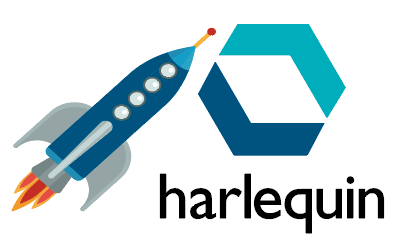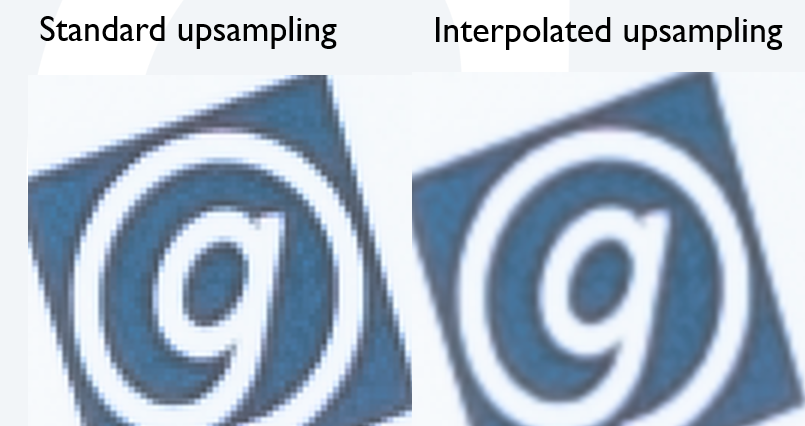Harlequin Core Bulletin - August 2022
This page applies to Harlequin v13.2r0 and later; both Harlequin Core and Harlequin MultiRIP.
Welcome to this edition of the Harlequin Core Bulletin
This bulletin was formally known as either the Harlequin HHR Bulletin or the HMR OEM Bulletin; we've now combined the two bulletins.
Harlequin Core v13.2r0 release
We recently released Harlequin v13.2r0, which comprised simultaneous releases of the Harlequin MultiRIP and the Harlequin Core SDK. Support notified all OEMs by email. Builds were made available on our FTP server.
The Harlequin Core v13.2r0 Release Notes are available at https://documentation.globalgraphics.com.
Update on Harlequin Core online documentation
After the successful move of other Global Graphics products to our online documentation system during 2021, we then migrated Harlequin Documentation to our online platform. This now includes the Extensions Manual, the API Reference Manual, and the Harlequin Core SDK Developer's Guide. There is also a list of "Recently Updated" items when you browse the content; for example, https://confluence.ad.globalgraphics.com/draft/hqncdd/search?q=Recently%20Updated&max=10
We will continue to add and update remaining legacy and current content throughout the rest of this year. Please bookmark the following page:
https://documentation.globalgraphics.com/support
All previously-issued PDF documents remain on the FTP site.
Harlequin Core performance update
During the last year, our Harlequin development team have been working very hard on two particular aspects of RIP performance:
More efficient processing of variable data jobs with re-usable content
We have been incrementally introducing HVD improvements to our scanning process and the objects that we can reuse. Documents are created in many ways with many different PDF libraries, which means we encounter codes, text, and images in unexpected ways (for example, with overprint and transparent attributes that have little or no effect on the designer's intention for the appearance of the printed result).
Across many suites and configurations, we observe improvement of page throughput from a few percent to over 50%, but with so many configurations used by our OEMs we encourage you to repeat tests in Harlequin Core 13.2rx that you may have run on Harlequin 12.x, or 13.0rx. If you have any particular jobs that don't get re-used as you might expect when using HVD, please either discuss this with me or submit it to Harlequin Support, using the portal: https://jira.globalgraphics.com/servicedesk/customer/portals.
RIP Farm performance
High-speed presses often use modern hardware to drive the press. This hardware presents our OEM and Development teams with constantly evolving challenges. For example, memory bandwidth may be a limiting factor in raw RIPping performance when using 8, 12, or more RIPs, as developments such as DDR5 memory start to ship, the areas of RIPping where we target performance may shift from being constrained by memory, to being limited by the way calculations are performed on the processor. For this reason, we have been reducing the need for memory when performing certain operations and also optimizing for certain modern hardware.
By optimizing for modern hardware, we may reduce performance on very old architectures in some cases. From v14, the RIP performs startup checks that verify the hardware meets out minimum supported. It has also become necessary to remove compatibility with 32-bit systems from v14 onward.
PDF/X-6 news
Global Graphics are moving forward in a leading position with PDF/X-6 support by adding in-RIP support to allow users to process PDF/X-6 files with confidence, providing informative RIP reporting and high color fidelity.
PDF-X/6 has been fully assessed and we are implementing all the validation checks relevant to high-quality printed output (including the ability to use new PDF 2.0 control for specifying Black Point Compensation for individual graphical contents). PDF/X-6 mandates that you enable Black Point Compensation in the absence of an explicit setting. Complete detection and validation of PDF/X-6 files is available in Harlequin Core. Further information about PDF/X-6 is widely available on the Internet and is an ISO standard 15930-9: https://www.iso.org/standard/77103.html.
At a high level, it is based on PDF 2.0 and defines the main PDF/X-6 as successor of PDF/X-4. The new standard also defines two formats for partial exchange:
- PDF/X-6 takes advantage of the new PDF 2.0 feature of page-level output intents. This feature is useful for documents where individual pages are intended to be printed on different output devices (for example, a collection of mailings where the cover page is printed in black and white only, while the inner pages are printed in color).
- Spectral data (CxF) may be also present in a PDF/X-6 document, but there are no specific regulations regarding its use, except that such data must not conflict with the output intent ICC profile.
PDF/VT-3 is based on PDF/X-6, which is based on PDF 2.0. PDF/VT-3 new features include allowing color management for jobs to be printed on multiple types of media.
PDF/X-6 and PDF/VT-3 support will be included in Harlequin Core v14.
CxF color support and benefits
Traditionally inks are divided into two types: Process (for example, CMYK) and Spot (such as Reflex Blue). Spot inks can now have their characteristics such as tints of the color and opacity described in CxF data. In most workflows the color is named, and an equivalent value in an alternative color space (for example, CMYK or LAB) is generated. The consumer of this file can then approximate or emulate the spot color in the target color space on the press.
The data in a CxF color data (standalone or part of PDF 2.0) gives workflows the ability to more accurately emulate those spot colors, and even simulate the overprinting of two spot colors on one another (though this has limitations). Our tests for basic solid spot colors (CxF/X-B) have shown the completely CxF workflow produced output with as little as 0.1 DeltaE when compared to processing using the alternative values calculated in the normal way (Named Colors). With the introduction of CxF, there is no immediate need for designers and prepress operatives to abandon current ways of working.
The specification for CxF does not mandate "how" to use the data, but simply how to write it in standalone file; the PDF spec allows it to be embedded into the PDF. Therefore support can mean a wide range of things.
At Hybrid Software Group, we expect to define "full" CxF support as improved simulation of overprinting of one or more spot colors to each other, taking into account the opacity. However, there are still limitations to CxF. At the time of measuring the printer color with a spectrophotometer, it uses a backing of white or black to calculate opacity; this still does not describe how two spot colors overprint each other. Harlequin Core engineers are working with the Hybrid Software Group company ColorLogic to provide the most accurate spot colors in the industry. Our strategy is for phased support for CxF with "Full" support from Harlequin Core v14; we will soon provide trouble-free processing of simple solid spot colors defined as CxF.
For the future we are researching ways to improve further on the quality of overprinted emulated spot colors on a range of printing processes; field tests are ongoing.
Introducing "QuickStart"
Feedback from a number of interviews with OEM developers, partner developers, and technical representatives such as product managers has led us to making some changes to our SDK for Harlequin Core; it is easier for new evaluators - and even existing integrators - to use.
We have already been providing Microsoft Visual C++ (MSVC) project files and Getting Started Guides (now online), and a technology preview of our JSON configuration.
In a further set of changes we have named QuickStart, which includes but is not limited to:
- Built Harlequin Core SDK as a library that customer code can link with directly.
- Improved Visual Studio solution and build experience.
- Reduced number of include directories for customers integrating their own build systems.
- Easier to use “one-function” job processing API call.
- Simplified and reduced compile-time options.
- Reduced differences in Makefiles in future releases for easier upgrade integration.
- Providing an easy-to-use test page to report a variety of configuration items.
A number of customers expressed an interest in having an advance preview of these changes to our SDK; we plan to provide a technology preview based on Harlequin Core v13.2r0.
If you would like to receive this in August/September 2022, please contact Paul Dormer or your account manager directly.
Upsampling low resolution images in the Harlequin Core
A recent enquiry reminded me that we have had an "interpolation" feature in the HQN Core for many years, which was used less and less because modern cameras were taking bigger and bigger images with more pixels than ever. It was more likely the RIP would need to downsample rather than upsample! We have noticed in recent times that "cloud" storage services such as WhatsApp, Google, Amazon, Facebook, and so on may resample your photographs pixels and even reduce the resolution. Then end customers can only locate the picture they want to use on one of these services and there is a risk that a low-quality image is included in a print order.
In this instance, the solution can be to use the RIP feature called /InterpolateAllImages, which enables good enough quality in these orders to help avoid rejection, delays, and loss of revenue.
Upcoming changes to supported platforms
- From Harlequin Core v14, we are dropping formal support for Redhat Enterprise Linux 6.x and 7.x support in favor of RedHat Enterprise Linux 8.6, as well as Ubuntu 20.4. If you wish to evaluate or develop on other Linux distributions, please ask us for assistance.
- From Harlequin Core v13.2, please note that Windows 11 updates have been provided since its launch in 2021; we recommend that you update to Version 21H2.
As described above in the performance update: From Harlequin Core v14, we are dropping support for all 32-bit platforms. Specifically, this means the end of support for 32-bit Windows 10 workstation and Windows 8.1 if latest Windows updates, including KB4561666, are applied. Please contact me or your account manager if you have questions about this end-of-life announcement.
About the Harlequin Core Bulletin
2030 Cambourne Business Park, Cambourne, Cambridge, CB23 6DW, UK
Teams | email: paul.dormer@globalgraphics.com
If you no longer wish to receive this bulletin, or if you have colleagues who you’d like to add to the distribution, please email me and I’ll update the list.
Forward view is indicative only; it may not form part of any contract, and it may be changed at any time at the sole discretion of Global Graphics.
© Copyright Global Graphics Software Limited 2022.
All Rights Reserved.


